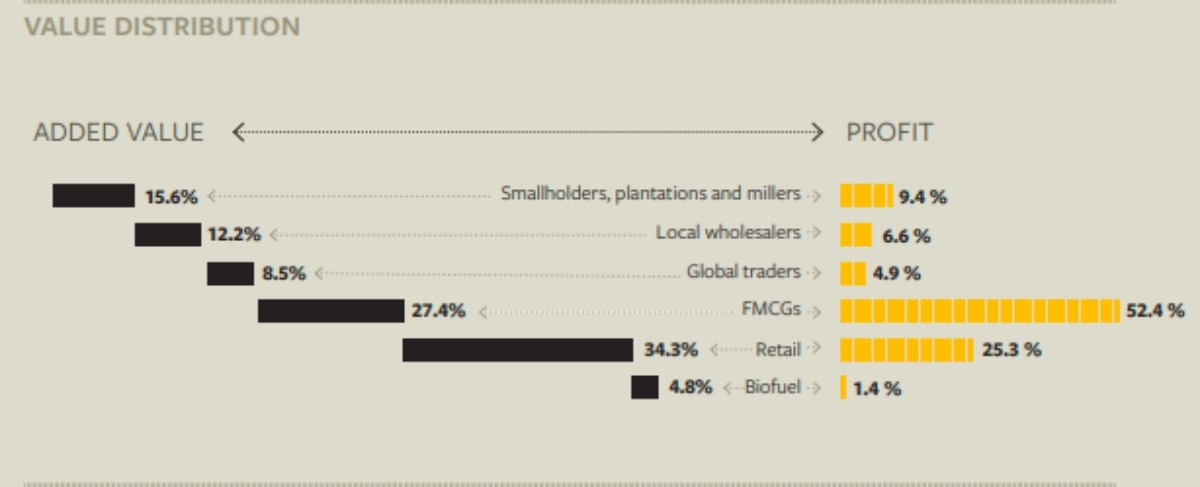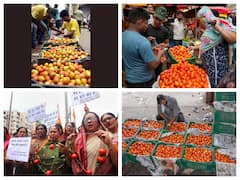What Worries Small Sugarcane Farmers In India, Brazil And Mexico
Sugarcane is a water-intensive crop and distressed by slight changes in temperature and other climatic conditions.

Sugarcane supplies 86 percent of the world’s sugar and grows best in tropical climates. It has the notable quality of serving both as a food and a fuel source. The global South accounts for approximately three-quarters of all sugar consumption. These countries are expected to lead the future market growth of the sector with increasing consumption of processed products and soft drinks. In contrast, demand is expected to stagnate in the markets of the global North due to health concerns related to sugar consumption, such as obesity and diabetes. Prices are projected to trend slightly upwards. This is the result of a tighter balance between global supply and demand than in the past decade. Meanwhile, small-scale sugarcane farmers face important challenges, like climate change and limited access to technological development.
Production and trade
Sugar is derived from three main crops: sugarcane, sugar beet and corn starch. Of global sugar production, one third is sold on the global market, and two thirds in domestic markets. Sugarcane is mainly grown by small-scale farmers in more than 100 countries, with a wide variety of land holdings. Reliable data on the number, size, and production levels of sugarcane farmers worldwide is scant. According to some estimates, as much as 40 percent of sugarcane may be grown by as many as 60 million small-scale farmers, while the remaining 60 percent is grown on large plantations.
The largest producers are Brazil, India, China and Thailand accounting for 70 percent of world production in 2020. Next to cane sugar, another key product from sugarcane processing is ethanol, which is used for producing alcoholic beverages and biofuels. Furthermore, cane bagasse is used for generating electricity and animal feed. The food and beverage sector is a major driver of sugar consumption. Between 2001 and 2018, world sugar consumption increased by around 40 percent, or an average annual growth of 2 percent. Major markets include India, the EU, China, Brazil, the US and Indonesia.

Prosperity
In the sugarcane producing countries of our research (Brazil, India and Mexico), national policies supporting the sugar industry, including production quotas, guaranteed prices and subsidies, play an important role in the market price of sugarcane. Small changes in consumption, production trends or in related policies have immediate impacts on world market prices as Brazil is the main exporter and India is the largest consumer and second largest producer. To protect their domestic markets, most countries use specific policy instruments. For instance, transportation subsidies to stimulate exports of sugar and support domestic sugar prices in India, the implementation of the biofuel programme (Renovabio) in Brazil, or the adjustments of WTO tariff rate quotas to limit the export of Mexican sugar to the United States.
While farmers in Brazil score marginally positive on our prosperity questions, it’s a different situation in India and Mexico. Here resource-poor sugarcane farmers tend to find it very difficult to earn sufficient income to sustain both household needs and farm activities. The small-scale farmers’ income largely depends on the quantity and quality of the sugarcane. Farmers anticipate that the average yield quantity will fall this year (2022), since they will likely have to reduce their fertilizer usage due to a surge in prices after Russia’s invasion of Ukraine. Another challenge is shortening the time between harvesting and milling to maintain the sugar content in the crop and deliver a high-quality product. Both options – increase yields and higher transportation costs – require upfront investments from small-scale farmers.

Since the sugar sector is a complex value chain supporting a large number of other industries, revenues are difficult to define. The total value generated in the cane sugar supply chain is estimated at 304 billion dollars (US). Although the values and profits generated by small-scale farmers look positive on a balance sheet, they need to be divided by millions, which explains why many sugarcane farmers are unable to sustain their livelihoods. Value is added during processing and marketing activities, capital-intensive activities that are outside the reach of small-scale producers. The highest value generated on cane sugar is by the FMCG companies. In gross profit and operating profit their share is around 50 percent. These high percentages are due to the strong pricing-up power by companies like Coca Cola, Nestlé and Unilever.
Inclusivity
Generally, Latin America shows more mechanization in sugarcane production than Asia and is structured with larger sugarcane-producing landholdings. This contrast is illustrated by the productive models of the two largest global sugarcane producers. While production in Brazil is controlled by plantations and large cooperative mills, small-scale farmers dominate in India, and in many other developing countries. Thus, farmers in Brazil tend to be better organized and supported than their counterparts in Mexico and India.
In the context of inclusivity, it’s relevant to note that the participation of female small-scale farmers in our survey is only 19 percent. This highlights the persistent issue of women not being considered as farmers (given the requirement of landholding rights). Especially in India, there are prevalent social norms that restrict participation of women in agriculture. In their answers, women in all three countries tend to have a more negative perception of their access to services, agricultural inputs and market information than their male counterparts.

Balance with nature
Sugarcane is a water-intensive crop and distressed by slight changes in temperature and other climatic conditions. Of the farmers in Brazil, India and Mexico, who had responded positively to statements on prosperity, 93% responded negatively to balance with nature questions. Their responses highlight that they are seriously worried about the future of cultivation in the wake of climate change, deterioration of the soil quality and low water availability.
Since droughts can significantly reduce production of the water-sensitive sugarcane, the farmers’ perceptions reflect recent experiences. For example in Mexico, a historic drought led to a significantly reduced harvest in 2019/20. In India, unfavorable weather conditions negatively impacted sugarcane production in the same season. And Brazil recorded significant lower yields than previous years attributed to droughts and inflated costs of production.

Challenges
Many small-scale farmers deal with low incomes in the sugarcane sector, mainly caused by the lack of negotiating power in a captive market, where large numbers of farmers are dependent on a small number of buyers. Demand for sustainably produced sugarcane is still minor and hampered by the fact that most consumers do not know where the sugar used in company products comes from. There is a lack of product traceability through the value chain that makes sugar the least observed agricultural commodity.
Edited by Jeroen Douglas, Executive Director, Solidaridad Network. Author Sjoerd Panhuysen is a sociologist specializing in environment and sustainable development and is associated with Ethos Agriculture.
(This is an edited excerpt from the Small Farmer Atlas published by international CSO Solidaridad. This selection is the first of a two-part series. The Atlas surveyed close to 10,000 small-scale farmers across Asia, Africa and Latin America to gain insights on how they view sustainable development, particularly regarding their household income, access to markets, and utilization of natural resources. You can find the full report here)
[Disclaimer: The opinions, beliefs, and views expressed by the various authors and forum participants on this website are personal and do not reflect the opinions, beliefs, and views of ABP News Network Pvt Ltd.]





































